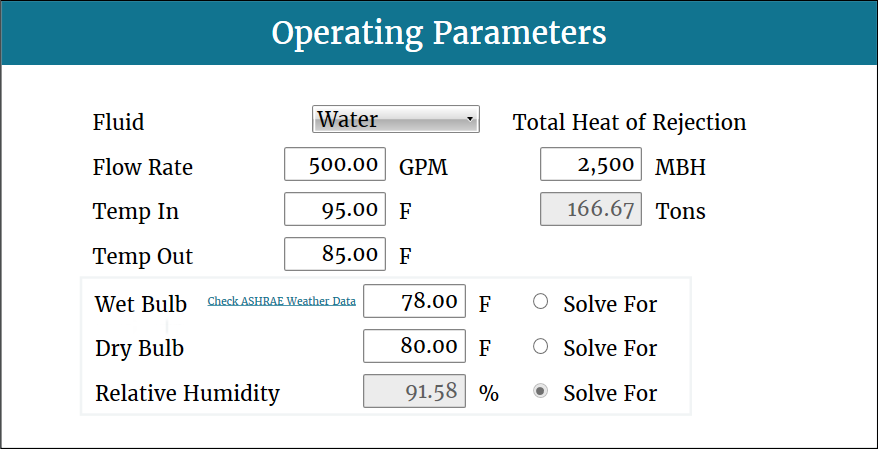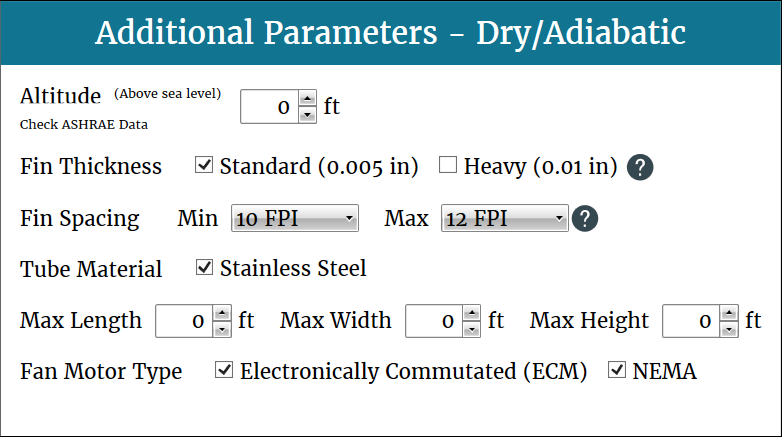Dry & Adiabatic Criteria
Compared to evaporative units, dry and adiabatic units require more design criteria information in order to return ideal units.
It is important to note that the electrical service specified during design criteria selection will limit which dry and adiabatic models are returned.
Coolers and condensers both have dry and adiabatic product lines available for selection through The Selection Screen.
Operating Parameters

In addition to the operating parameters required for evaporative units, dry and adiabatic units require a dry bulb in order to calculate required capacity.
Relative humidity is an important consideration for dry and adiabatic units, greatly impacting the performance of the units.
Additional Parameters

Altitude: Specifies unit elevation above sea level. Higher elevations adversely affect unit capacity.
Fin Spacing: Specifies the minimum and maximum fin spacing on returned units.
Tube Material: Specifies the tube material.
Max Length, Width, Height: Specifies the maximum dimensions of returned units.
Fan Motor Type: Specifies desired motor types.
Sound Requirements

The Sound Requirement parameters allow users to specify a maximum sound pressure based on one of two sound test methods.
CTI ATC 128 measures sound pressure from a specific side of the unit at a distance set by the user, and is the method most commonly used in North America for evaporative cooling equipment.
For CTI ATC 128 sound conditions, specify the maximum sound pressure, distance, and specific location around the unit.
EN 13487 Parallel Piped measures the average sound pressure around the entire unit at a specific distance.
For EN 13487 sound conditions, specify a maximum sound pressure and distance from unit.